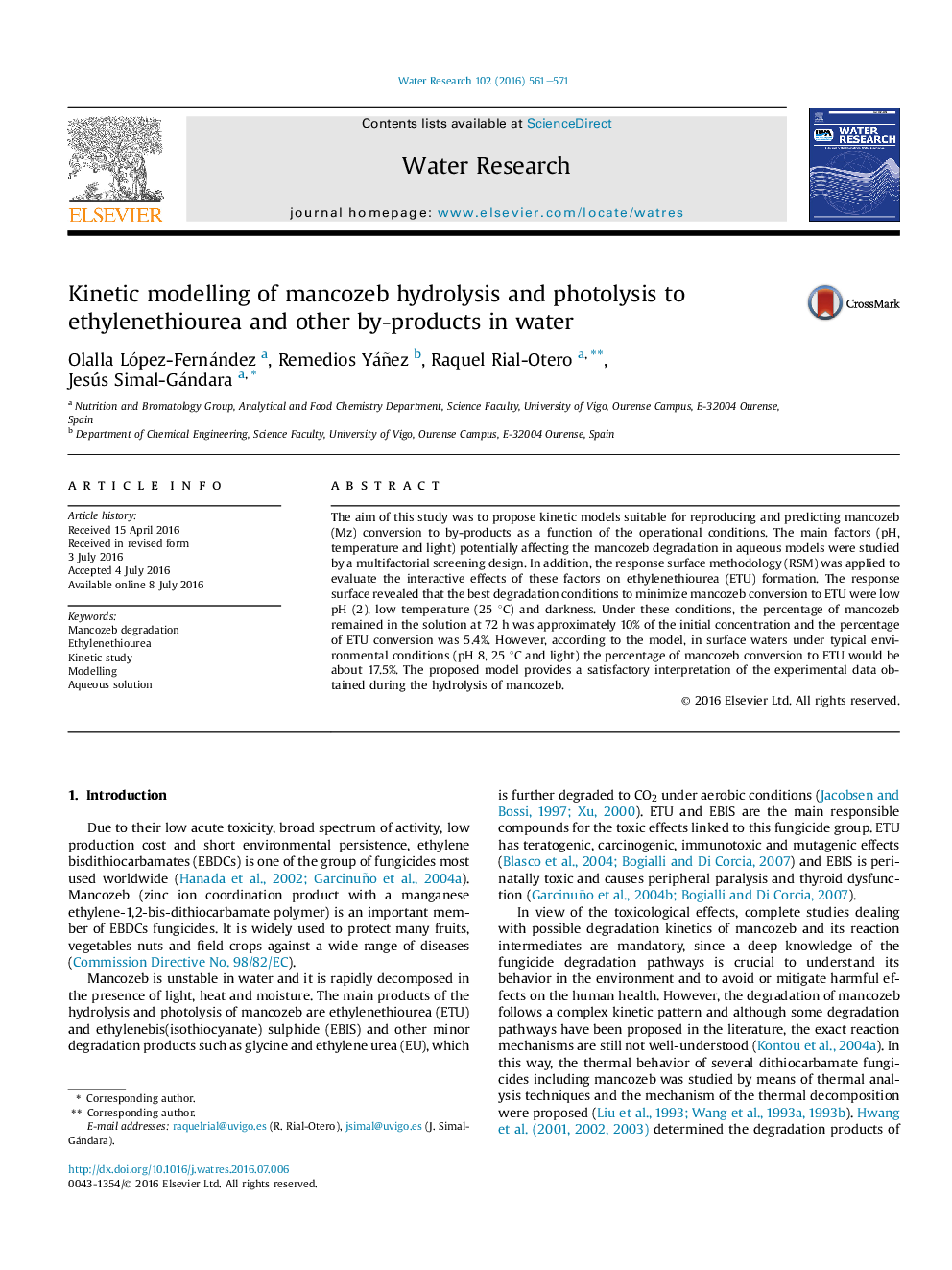| Article ID | Journal | Published Year | Pages | File Type |
|---|---|---|---|---|
| 4480887 | Water Research | 2016 | 11 Pages |
•The effect of pH, temperature and light on mancozeb degradation is studied.•Kinetic models for predicting mancozeb conversion to by-products are evaluated.•Favorable values of R2 confirm the validity of the models for data interpretation.•Response surface methodology is used to study mancozeb conversion to ethylenethiourea.•Minimal conversion to ethylenethiourea is obtained at pH 2 and 25 °C in the dark.
The aim of this study was to propose kinetic models suitable for reproducing and predicting mancozeb (Mz) conversion to by-products as a function of the operational conditions. The main factors (pH, temperature and light) potentially affecting the mancozeb degradation in aqueous models were studied by a multifactorial screening design. In addition, the response surface methodology (RSM) was applied to evaluate the interactive effects of these factors on ethylenethiourea (ETU) formation. The response surface revealed that the best degradation conditions to minimize mancozeb conversion to ETU were low pH (2), low temperature (25 °C) and darkness. Under these conditions, the percentage of mancozeb remained in the solution at 72 h was approximately 10% of the initial concentration and the percentage of ETU conversion was 5.4%. However, according to the model, in surface waters under typical environmental conditions (pH 8, 25 °C and light) the percentage of mancozeb conversion to ETU would be about 17.5%. The proposed model provides a satisfactory interpretation of the experimental data obtained during the hydrolysis of mancozeb.
Graphical abstractFigure optionsDownload full-size imageDownload high-quality image (91 K)Download as PowerPoint slide
